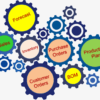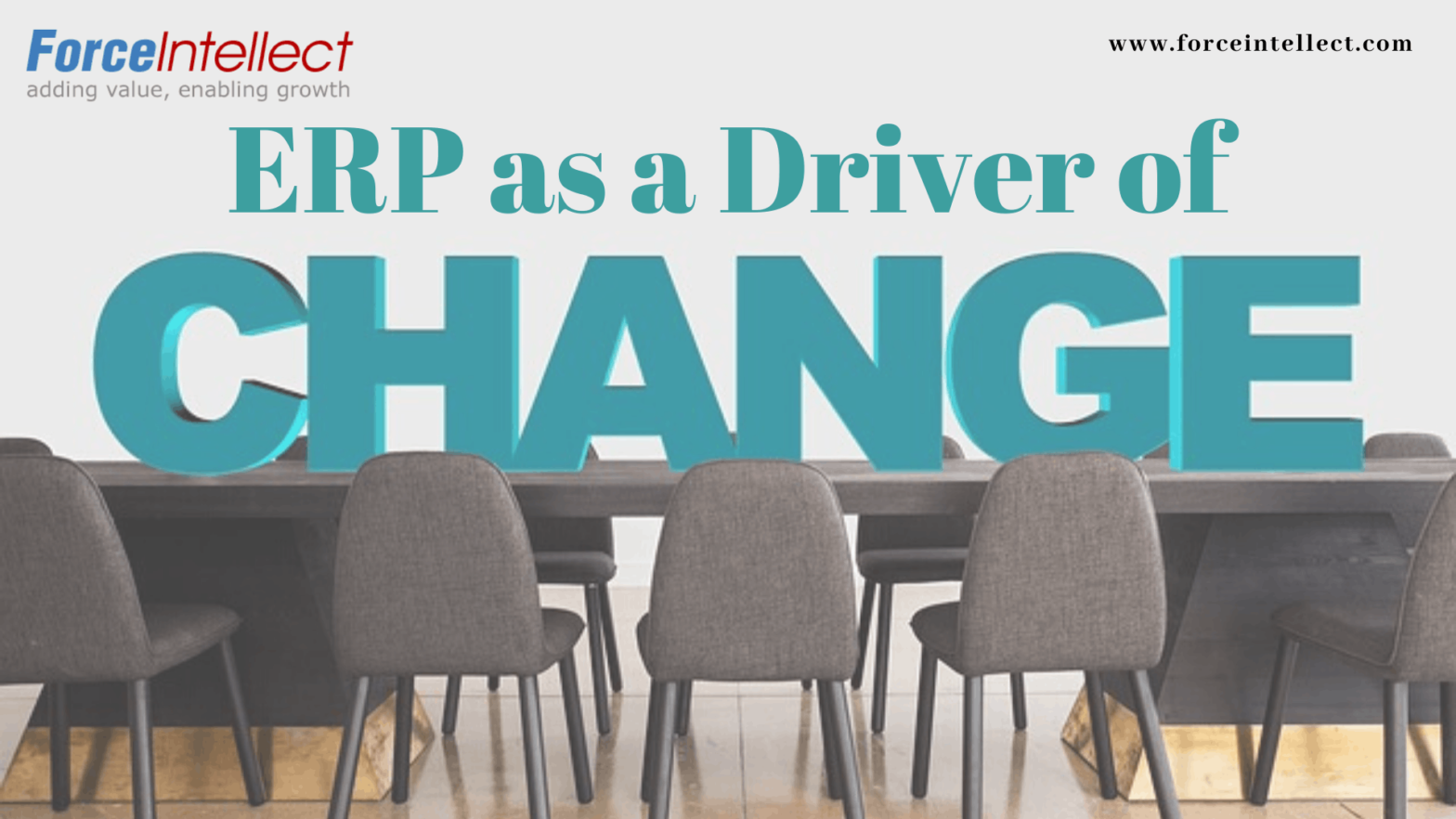How to use ERP as change driver in the organization?
“Change is the only Constant in Business. Those who are able to adapt will win” Alfred Herrhausen
Changing Business Landscape
The business landscape is changing very rapidly due to new and emerging technologies, digitization and automation. Hence embracing change is the need of the hour for any organization to survive the competition in the long term and succeed.
Companies that are early adopters of ERP, digitization, automation have gained a significant edge over their competitors in terms of resource utilization, process transparency & efficiency, availability of information, reduction in costs, speed to market and so on.
In order to understand, How to Use ERP as change driver in the Organization, let us first understand what are the challenges faced by Manufacturing SMEs.
What are the Biggest Drivers of Change in Manufacturing SMEs?
- Achieving Customer Service & Experience at par with large organizations
- Lack of operational excellence in processes to compete against innovative companies
- Identify areas and opportunities for improvements in key business areas
- Lack of a single source of accurate information to make informed decisions
- Resources, Departments, Functions spread across different locations
How ERP as Change Driver provides a competitive edge?
Implementing an ERP Software provides the technology edge that businesses require to improve their processes to grow and scale their businesses. It also brings a cultural change in terms of making timely, data-backed and informed decisions.
ERP provides accurate data and real-time visibility
![]() An ERP integrates disparate systems from multiple locations of a manufacturing organization into one single shared database. Information is captured in real-time in digital format, saved in a single central location and is easily accessible anytime, anywhere from mobiles, laptops, tablets, etc. It brings transparency in business processes and provides an accurate picture to the right people at the right time.
An ERP integrates disparate systems from multiple locations of a manufacturing organization into one single shared database. Information is captured in real-time in digital format, saved in a single central location and is easily accessible anytime, anywhere from mobiles, laptops, tablets, etc. It brings transparency in business processes and provides an accurate picture to the right people at the right time.
Standardized Processes
 Companies can implement standard policies, processes, and rules across departments, functions, and locations. This streamlines the processes and introduces business discipline in the organization. This also helps to continuously monitor progress and bring improvement by identifying delays, bottlenecks & make required changes in processes
Companies can implement standard policies, processes, and rules across departments, functions, and locations. This streamlines the processes and introduces business discipline in the organization. This also helps to continuously monitor progress and bring improvement by identifying delays, bottlenecks & make required changes in processes
Measure Performance & Process KPI Metrics
 Companies can monitor historical data and trends to define Key Performance Indicators. KPIs are set as benchmarks to monitor, analyze and optimize processes such as Production, Inventory, Procurement, Supply Chain, and so on. This makes it easier to focus on areas of improvement and bring more operational excellence & efficiency.
Companies can monitor historical data and trends to define Key Performance Indicators. KPIs are set as benchmarks to monitor, analyze and optimize processes such as Production, Inventory, Procurement, Supply Chain, and so on. This makes it easier to focus on areas of improvement and bring more operational excellence & efficiency.
Better Planning, Productivity & Optimum Utilization of Resources
![]() With improved visibility of information, detailed reports and significant insights to process trends, companies can make better plans for processes such as production, inventory, procurement processes. Companies can reduce costs, reduce wastages, eliminate delays, and achieve optimum utilization of resources.
With improved visibility of information, detailed reports and significant insights to process trends, companies can make better plans for processes such as production, inventory, procurement processes. Companies can reduce costs, reduce wastages, eliminate delays, and achieve optimum utilization of resources.
Improved Collaboration & Empowered Employees
![]() ERP helps achieve significant savings in manual efforts and papers work. Improves communication & coordination among employees. ERP helps to establish various workflows and information sharing for different business processes such as deliveries, returns, sales quotes, sales orders, etc. Alerts and Notifications are sent to concerned teams in case of deviation. Employees are empowered to take decisions to ensure smooth functioning.
ERP helps achieve significant savings in manual efforts and papers work. Improves communication & coordination among employees. ERP helps to establish various workflows and information sharing for different business processes such as deliveries, returns, sales quotes, sales orders, etc. Alerts and Notifications are sent to concerned teams in case of deviation. Employees are empowered to take decisions to ensure smooth functioning.
Improved Customer Service
 ERP helps to maintain client Information at a central location. The sales team can access all communications and keep track of customer requests online. They can also observe trends of specific requirements of each customer. Thus, organizations can build better relations with customers and provide more personalized services based on their specific requirements.
ERP helps to maintain client Information at a central location. The sales team can access all communications and keep track of customer requests online. They can also observe trends of specific requirements of each customer. Thus, organizations can build better relations with customers and provide more personalized services based on their specific requirements.
Speed in Business
With the help of an ERP, you can achieve improvement in productivity, efficiency in processes and faster cycle times. All this helps to ensure a faster time to market and brings about Speed in Business.
Summary
With all these benefits of ERP, ERP acts as a change driver, provides the technology & digital backbone required by an organization. But more importantly, it also helps to build a culture of informed decisions, where employees are encouraged to achieve operational excellence, look for ways of continued improvement in productivity, make effective & optimum utilization of time and resources to achieve excellent customer service.

